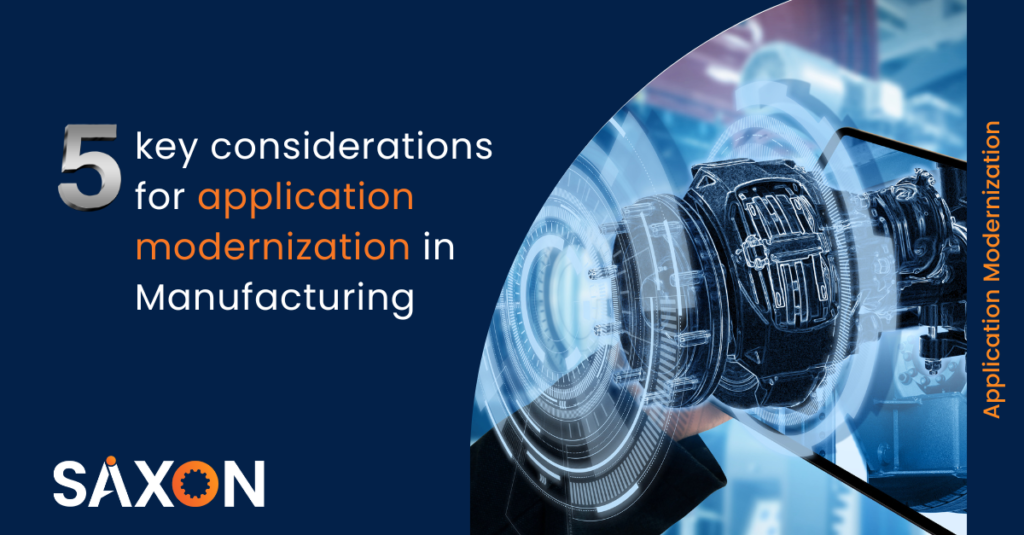Legacy applications – the name is self-explanatory. These applications are outdated and the application providers do not offer any support to maintain these applications. You might need to upgrade to their latest versions or replace them with modern solutions. We call this process application modernization. Whether you are playing catch up in Industry 4.0 or getting ready for Industry 5.0, legacy application modernization is an opportunity for manufacturers to get a head start. To draft a well-thought-out app modernization strategy, you must carefully consider these five key things:
Does the solution fit in a unified digital ecosystem?
Real-time collaboration is key for reliable plant operations. For example, your maintenance manager can schedule maintenance activities more efficiently if he can access real-time operator rounds data. Data silos created by the legacy systems, such as an on-premises maintenance management application, are a barrier to establishing real-time collaboration. When moderating these applications, choose a cloud-native solution that easily integrates into your unified digital ecosystem. If you don’t have a digital ecosystem, consider a platform that allows you to create one. For example, Microsoft Power Platform. Because when you enter Industry 5.0, you must have a single source of truth to build a synergy between humans and machines.
You can learn how using Power Apps and the Azure cloud together can help you build game-changing applications for your modern manufacturing plant here.
Is the application human-centric?
Industry 5.0 puts human experience at center stage. Most legacy applications, although they are digital, require manual efforts. They replace paper forms with more mouse clicks. Consider deploying AI-powered applications that automate processes. AI-powered automation frees up valuable work hours and eliminates the room for human errors. Your employees can focus on things that truly deserve human attention and intelligence. This will uplift employee morale and create a healthy workplace.
Will the application help in data-driven decision-making?
In the data-driven industrial world, the role of a digital application is not just being a medium to execute processes. The digital application should also give you actionable insights into the performance of your processes. Consider a solution that offers a dashboard or integrates with a data analytics platform within the unified digital ecosystem for performance measurement.
Can the application overcome change resistance?
When modernizing applications, you might be replacing legacy applications with entirely new applications or making major modifications to them. Either way, modernization has to stand change resistance from your workforce. In a manufacturing plant, reluctance to adopt new digital applications is not unusual. Consider building applications using fusion teams – a mixture of software developers and business teams. Using no-code/low-code platforms such as Microsoft Power Platform, your operations teams can build applications as fast as in one day. Who else would be a better person to build a warehouse management application than your warehouse manager?
Will the application generate a justifiable ROI?
Developing and maintaining an application is a costly affair. According to VDC Research, the average development cost of an enterprise application is $140,000. Application maintenance costs 15 – 20% of the development cost. To be ready for Industry 5.0, you should make conscious digital investments that yield sustainable results and resilient processes. Also, it should generate a justifiable ROI. Consider using technologies that enable you to build and maintain applications at a low cost. For example, you can build no-code/low-code applications on Microsoft Power Platform 45% cheaper and 10X faster than traditional development.
Microsoft Power Platform for application modernization in Manufacturing
For a successful app modernization strategy, you need to build AI-powered applications faster at a cheaper cost. You should create a single source of truth accessible to all employees. Moreover, the applications should be intuitive for the end-users. Microsoft Power Platform enables you to build such applications through their offerings – Power Apps, Power Automate, Power Virtual Agents, and Power BI. Using Power Apps, you can build applications at 74% lesser development costs. These applications will help you achieve productivity gains of up to 3.2 hours per week and increase ROI by 188% over three years.
You can learn how using Microsoft Power Apps can make your manufacturing plant future-ready here.
Have questions?
At Saxon, we are helping enterprises modernize their applications using Microsoft Power Platform and the Azure cloud. Our experts love to help you create a successful application modernization strategy for your manufacturing company.

